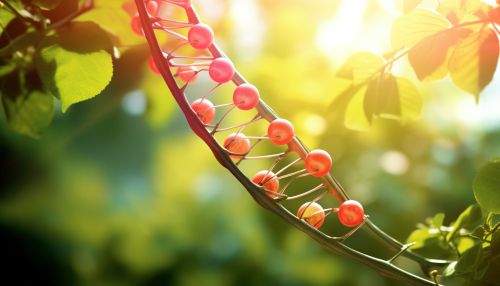The Biological Mechanisms of Plant Adaptation to High Light
Introduction
Plants are autotrophic organisms that utilize light energy to perform photosynthesis. However, the intensity of light that plants receive can vary greatly, from low light conditions in understory environments to high light conditions in open habitats or at high altitudes. High light intensity can cause damage to the photosynthetic apparatus and lead to the production of harmful reactive oxygen species. To survive in such conditions, plants have evolved a variety of biological mechanisms to adapt to high light. These mechanisms include structural adaptations, physiological adaptations, and molecular adaptations. This article will delve into these mechanisms, providing a comprehensive understanding of how plants adapt to high light conditions.
Structural Adaptations


Plants have evolved a number of structural adaptations to cope with high light intensity. These adaptations primarily involve modifications to the leaf, the primary organ for photosynthesis.
Leaf Orientation
One of the simplest ways plants adapt to high light is by altering the orientation of their leaves. This is known as heliotropism. By changing the angle of their leaves, plants can reduce the amount of light hitting the photosynthetic tissues, thereby reducing the risk of photodamage.
Leaf Size and Thickness
High light plants often have smaller and thicker leaves compared to their low light counterparts. Smaller leaves have less surface area for light absorption, reducing the risk of over-excitation of the photosynthetic apparatus. Thicker leaves, on the other hand, have more layers of cells, providing additional protection against high light intensity.
Leaf Surface Features
High light plants often have leaves with a waxy or hairy surface. These surface features can reflect excess light, reducing the amount of light absorbed by the leaf. In addition, they can provide a physical barrier against ultraviolet (UV) radiation, which can cause damage to the photosynthetic apparatus.
Physiological Adaptations
Plants also exhibit a range of physiological adaptations to high light. These adaptations involve changes in the photosynthetic process and other metabolic pathways.
Photosynthetic Adaptations
In high light conditions, plants can alter the photosynthetic process to prevent over-excitation of the photosynthetic apparatus. This can involve changes in the light-harvesting complex, the photosystems, and the electron transport chain.
Light-Harvesting Complex
The light-harvesting complex (LHC) is a group of proteins and pigments that absorb light and transfer the energy to the photosystems. In high light conditions, plants can reduce the size of the LHC or alter the composition of pigments to reduce light absorption.
Photosystems
The photosystems are the core of the photosynthetic apparatus, where light energy is converted into chemical energy. In high light conditions, plants can alter the ratio of photosystem I to photosystem II (PSI:PSII) to balance the energy input and output of the photosynthetic process.
Electron Transport Chain
The electron transport chain (ETC) is where the energy from light is used to create ATP and NADPH, the energy carriers for the Calvin cycle. In high light conditions, plants can increase the capacity of the ETC to handle the excess energy input.
Non-Photosynthetic Adaptations
In addition to photosynthetic adaptations, plants can also alter other metabolic pathways to cope with high light. For example, they can increase the production of antioxidants to neutralize reactive oxygen species, or increase the synthesis of heat shock proteins to protect against heat stress.
Molecular Adaptations


At the molecular level, plants can alter the expression of genes in response to high light. These changes can affect the structure and function of the photosynthetic apparatus, as well as other cellular processes.
Gene Expression
In response to high light, plants can upregulate the expression of genes involved in photosynthesis, antioxidant production, and heat shock response. This can enhance the plant's ability to cope with high light and its associated stresses.
Protein Modifications
In addition to changes in gene expression, plants can also modify the proteins involved in photosynthesis and other cellular processes. These modifications can include phosphorylation, acetylation, and ubiquitination, which can alter the activity, stability, and localization of the proteins.
Conclusion
Plants have evolved a wide range of biological mechanisms to adapt to high light conditions. These mechanisms involve structural, physiological, and molecular adaptations that enhance the plant's ability to cope with the stresses associated with high light. Understanding these mechanisms can provide insights into plant ecology and evolution, as well as practical applications in agriculture and horticulture.
